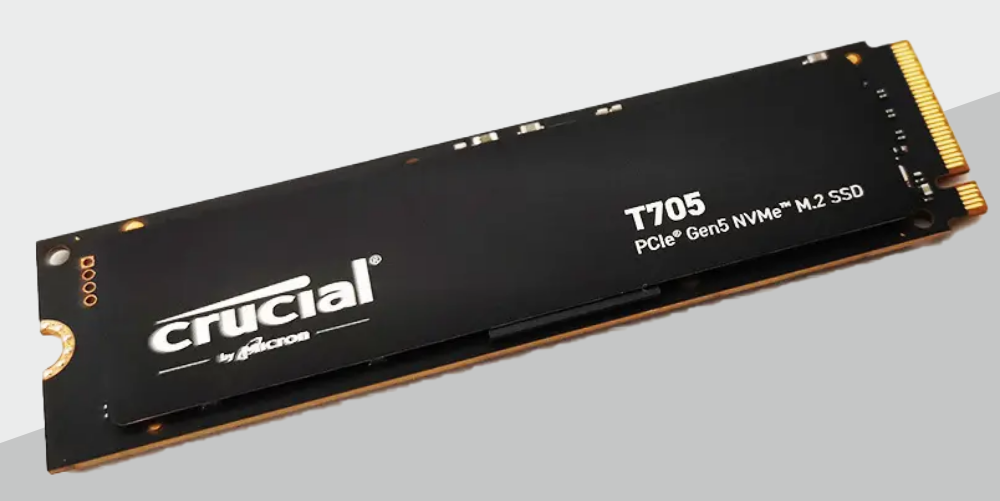
The T705 is a 2280 M.2 PCIe Gen5 NVMe SSD designed for desktop PCs. 2280 is the standard size for an M.2 SSD, being 22mm wide and 80mm long.
The SSD’s packaging boldly states “up to 13600 MB/s” data transfer speeds, which will be a read speed when installed on a device supporting PCIe Gen 5 NVMe SDDS. The SDD will work with older NVMe Gen 4 and Gen 3 specifications but won’t get the same touted performance. This also means that it will work with a PlayStation 5 (but don’t forget the heatsink).
In the box is the M.2 drive, plus a piece of paper that directs you to the Crucial website. As well as detailed instructional videos there are a couple of applications to download that may be useful. The Crucial Storage Executive software allows users to monitor storage devices and upgrade firmware. The Crucial Acronis True Image software allows you to clone your existing drive, including your system drive, onto the new T705. The purchase of a T705 include one month of membership to Adobe Creative Cloud with access to all the apps.
Whilst it can be used with a laptop, the Crucial T705 SSD’s requirement for a heatsink may make that impractical. The version of the T705 shipped for review had no integrated heatsink, though you can buy them with one factory fitted.
Most motherboards that support Gen 5 NVMe will come with a heatsink/cover over the Gen 5 M.2 slot. As factory fitted heatsinks are usually not removable, you are going to have to forgo the use of any cover/heatsink supplied with the motherboard. The T705 sent for review fit nicely under the Asus motherboard’s integrated heatsink without disrupting the board’s aesthetics.
Being mounted directly to the motherboard, the drives are easy to install, you just push the SSD into the M.2 slot. Many motherboards use clips instead of screws to secure M.2 SSDs in place.
PC gamers expecting insane game loading speeds are not going to see much, if any, improvement over Gen 4 or Gen 3 SSDs. Direct Storage, built into Windows 11, allows games to access the SSD at 20%-40% faster if they are programmed to take advantage of the technology. A quick scour of the Internet and Ratchet and Clank: Rift Apart is a game confirmed to use direct storage, with a few more that may use the technology and a few more with promised updates.
If you regularly shovel data around your system, then you’ll likely get the most out of the SSD. As a system drive, you’ll also likely see faster PC start-ups.
What actual performance improvements you actually experience depends on what you are doing with it. But I can say, Micron are not fibbing when they say up to 13600 MB/s. Using Crystal DiskMark, I recorded a maximum read speed of 13580.62 MB/s and a maximum write speed of 10179.72 MB/s. The speeds are, quite frankly, astounding, especially against the 145MB/s read speeds I get from my aging SATA hard drives.
At around AU$300, the Crucial T705 1TB PCIe Gen5 NVMe M.2 SSD is a reasonable price for such a high-performance data storage device. The SSD performs exactly as it should, but how much improvement you notice over slower drives will very much depend on what you are using it for

